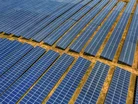PV manufacturing market’s epic growth opportunity

The world’s race to net-zero emissions has ignited an unparalleled opportunity for growth and innovation in the solar Photovoltaics (PV) market. By 2030, the world will need a staggering 5,000 GW of installed PV capacity, a sixfold increase from today’s capacity of 850 GW.
This vast market potential necessitates bold action on the part of businesses, governments, and investors. We anticipate that the United States, equipped with the Inflation Reduction Act (IRA), will challenge existing Chinese market dominance and spearhead a significant market share grab to satisfy unsatiated US and global demand for best-in-class PV panels. For dedicated stakeholders, this offers an unparalleled opportunity to achieve attractive returns on investment. We also expect to see many western countries and regions following suit (such as Canada and the European Union), many of which have recently announced support plans to shore up the domestic production of solar PV.
The global PV manufacturing landscape today
The current worldwide installed solar PV capacity stands at around 850 GW, with the vast majority of production led by Chinese manufacturers who control 80% of global module production. 8 out of the top 10 PV manufacturers in the world are based in China, including companies such as LONGi, JA Solar, Trina Solar, Jinko Solar, and Suntech. Just in the US, for example, of the 20 GW installed in 2022, over 75% of solar panels were imported from China.
While the dominance of Chinese manufacturers has been instrumental in driving down prices and making solar energy more accessible, the heavy reliance on a single country for PV manufacturing has raised concerns about supply chain dependency, quality and market concentration.
In response, countries like the United States are exploring new strategies, exemplified by the Biden Administration’s Inflation Reduction Act 2022. The Inflation Reduction Act (IRA) essentially doubles the cash-generative capacity of a PV plant (pushing EBITDA to up to 50% vs. typical 20-25%). Add to this off-takers pre-booking capacity (i.e., pre-selling years of production capacity ahead of time), and high capex projects are very much de-risked.
Remus Lai, Analyst at DAI Magister
Key market trends & future needs
To achieve net zero, the world needs an astonishing 5,000 GW of installed capacity, resulting in a significant demand-supply gap of around 4,200 GW that must be filled by the year 2030. Based on industry benchmarks of selling price per watt, this 4,200 GW gap translates into an astonishing c.$1.5tr market opportunity.
Existing industry players will address some of this gap. Still, new entrants will have to supply the majority because the current annual production capacity can only produce about 200 GW per year, which means that by 2030, the world will only be able to meet half of its PV needs.
This presents an opportunity for committed stakeholders and public-private partnerships (PPPs) to participate in the energy transition by engaging in viable, proven projects that offer attractive returns.
The US is well-positioned to lead the challenge against Chinese dominance in solar PV manufacturing
The United States is in a prime position to capitalise on the robust and unmet demand for superior solar panels across the US, North America, and Europe. The US boasts a supportive political and regulatory framework that promotes the growth and advancement of the industry. US-based manufacturers also have a competitive edge due to their strict adherence to quality control regulations and environmental standards, resulting in the production of higher-quality panels that have an extended lifespan.
In addition, relatively few dominant American players in the global solar market exist. Only First Solar, the largest PV manufacturer in the US, ranks among the top 10 global PV manufacturers. Even then, their current annual production capacity of 8-10GW is insufficient to garner a significant market share. It represents only a fraction of the demand-supply gap needed to achieve net zero.
There is a significant opportunity for domestic production in the US, driven by industry trends such as the need to reduce dependence on international supply chains and the growing demand for solar installations. Yet, in 2022, the USA only saw an increase of 20 GW in solar installations, far below the 100 GW annual production capacity required by 2028. Assuming manufacturers produced approximately 75% of the 20 GW, this implies an almost 20-fold growth in domestic production capacity by 2028.
Incumbents like First Solar will fulfil some of this production, but a large portion of the market share will still be available for new entrants. And this is based on supplying the US domestic market only. If we expand the addressable market to include North America and Europe, a much larger market is available for new entrants.
Investing in solar manufacturing is a win-win for governments and private investors
With the shift towards renewables and net zero becoming ever more urgent, the solar manufacturing industry presents an invaluable opportunity for governments and private investors to participate in the energy transition and positively impact local economies by creating jobs and fostering climate tech hubs – all while realising attractive returns.
Although the investment required for a new PV manufacturing plant is more significant than many other investments (e.g., a Series B round for a growth company), the benefits for stakeholders able to look past this ‘hurdle’ are significant and long-lasting.
To meet the world’s net-zero targets by 2030, there will be a growing need and demand for solar panels that grossly outstrips the current production supply. There is a window of opportunity, bolstered by government support programs in the West that investors and stakeholders should and must take advantage of. The time to do that is now.

